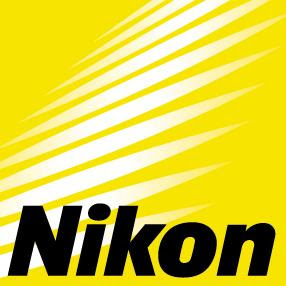
Guide price: D300 body only £1299.99
Nikon is pleased to announce the D300 digital single lens reflex (D-SLR), a camera that sets new standards of compact professional performance. The easy-to-use DX-format D300 offers outstanding image quality, multi-functional technologies and fast response. With class-leading 12.3 megapixel resolution, speedy 6 fps frame advance, self-cleaning sensor unit and high definition 3” VGA LCD display, combined with Nikon’s legendary durability, the D300 is a breakthrough solution for photographers searching for an advanced compact SLR.
“Packed with the latest technologies and Nikon’s renowned ergonomics, the D300 sets a new standard for professionals on a budget,” said Robert Cristina, Brand Manager, Nikon Professional Products, Europe. “The D300 is a true ‘go-anywhere’ camera, delivering fast response, high performance and ease of use that will appeal to anyone serious about their photography.”
Speed and Performance
The D300 is loaded with the latest professional technologies designed to produce images of the highest quality. The high-resolution 12.3 MP DX format CMOS sensor generates image files suitable for almost every type of output, combined with a fast standard frame advance rate of 6fps (up to 8 fps with optional Multi Power Battery Pack). The D300 offers fast power-up, quick response and outstanding flexibility to meet the needs of a wide variety of photographic assignments. The D300 powers-up in just 0.13 seconds, with an almost imperceptible 45 millisecond shutter lag.
Accuracy
The D300 boasts a self-cleaning sensor unit, which vibrates at high frequencies to remove any loose dust on the surface of the sensor’s optical low pass filter. The camera has a broad ISO range from 200-3200 plus Lo 1 (the equivalent of an ISO 100) and Hi (ISO 6400 equivalent). Image accuracy is also enhanced by the new Nikon Scene Recognition System, which uses the acclaimed Nikon 1005-pixel RGB colour sensor modified to recognise subjects’ shape and position before the image is captured. This also aids the new 51-Point Autofocus system in tracking subjects by their colour, while enhancing the accuracy of exposure and white balance metering. The D300 also offers Live View, which presents photographers with a live image on the LCD screen, with two modes suited to either hand held or tripod shooting. Autofocus is possible in both Live View modes.
Enhanced Images with EXPEED
The EXPEED image processing system is at the heart of the D300’s ability to capture and process high definition image data so quickly. The EXPEED system includes both hardware and years of Nikon image processing expertise. The D300 EXPEED system features 14-bit analog-to-digital (A/D) conversion with 16-bit image processing, both of which contribute to delivering results with Nikon’s signature ‘look and feel’ of rich accurate colours, smooth skin gradations and exceptional detail.
Ready for tomorrow
The D300 is completely high definition. From the 3-inch VGA LCD screen with 170-degree viewing angle, to the HDMI interface for HD ready displays, the D300 is ready for tomorrow’s imaging environment. The controls of the D300 were designed for ease of use, with an easy-to-view top LCD panel and an information display on the rear LCD screen that can change colour according to the ambient lighting conditions. The totally intuitive 8-directional multi-area selector makes selecting any of the 51-Point autofocus settings simplicity itself.
Durable and Dependable
The D300 continues Nikon’s long tradition of sturdiness and durability. The camera body is built from a magnesium alloy, while the camera’s shutter has been tested for 150,000-release cycles. The D300 is also designed for a high level of dust and water resistance.
Total Imaging System
Like the D3, the D300 isn’t just a camera, but part of a complete Nikon system to help photographers create great images. The D300 is compatible with the Nikon Total Imaging System of NIKKOR lenses, Speedlights, accessories and software that provides a complete solution for any photographic challenge.
One accessory that can extend shooting life, add ergonomic vertical shooting practicality and increase frame rate to up to 8 fps* is the MB-D10 optional Multi-Power Battery Pack. The compact MB-D10 simply attaches to the base of the camera. Unlike other grips, the MB-D10 does not occupy the camera’s battery space, so one can shoot with two EN-EL3e batteries, or add a powerful EN-EL4a battery into the mix. The D300 and MB-D10 can also be powered by AA size batteries as well. *Requires EN-EL4a.
Wireless Networking
Nikon pioneered wireless image transmission. Now, with the new Nikon Wireless Transmitter WT-43, the era of the multi camera network has arrived. Not only can one transmit (‘push’) images to servers and remotely control the camera from afar, the WT-4 also enables remote browsing of the camera’s image thumbnails as well. In a wireless environment, networks of up to 5 D300 cameras can be established and image thumbnails from all connected cameras browsed simultaneously and relevant image files ‘pulled’, while the photographers continue shooting.
The D300 body measures 147.2 (W) x 112.8 (H) x 74(D) mm and weighs just 795g.
For more information about Nikon's award-winning products please visit www.nikon.co.uk






